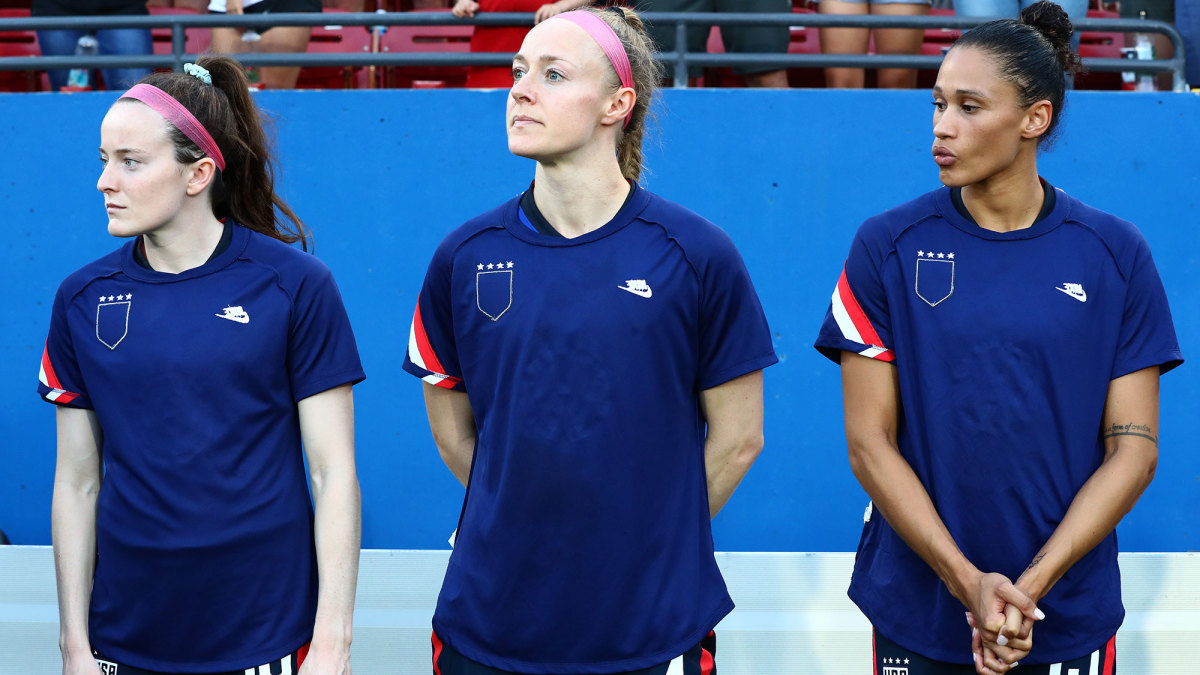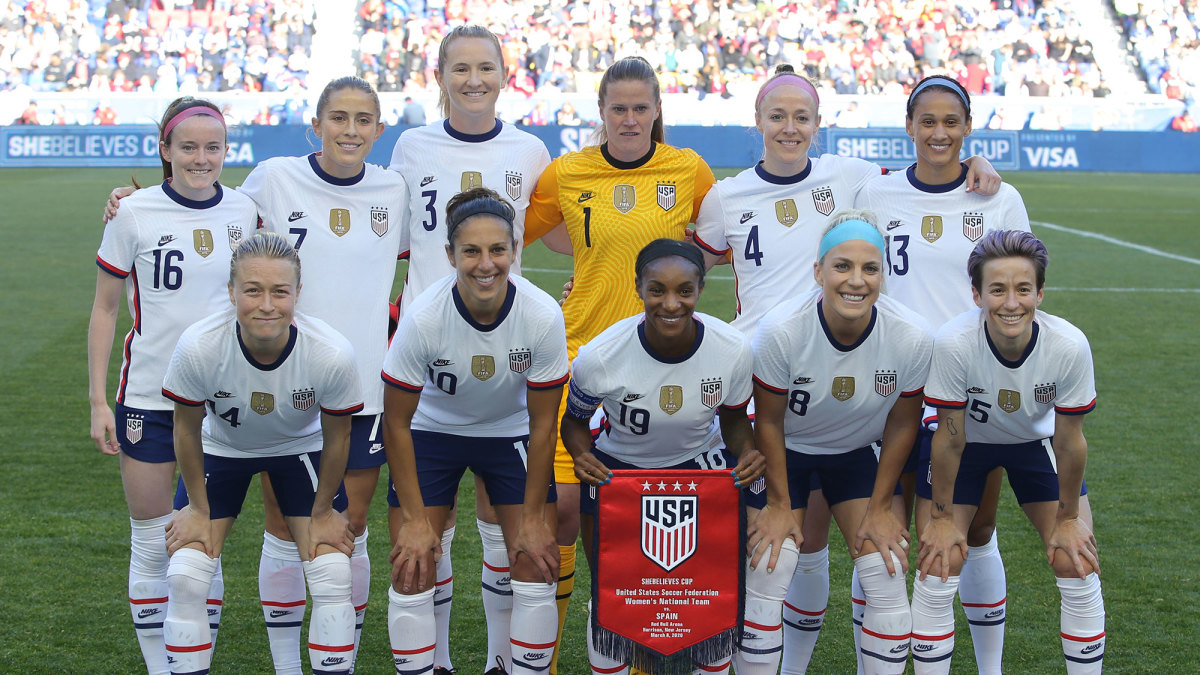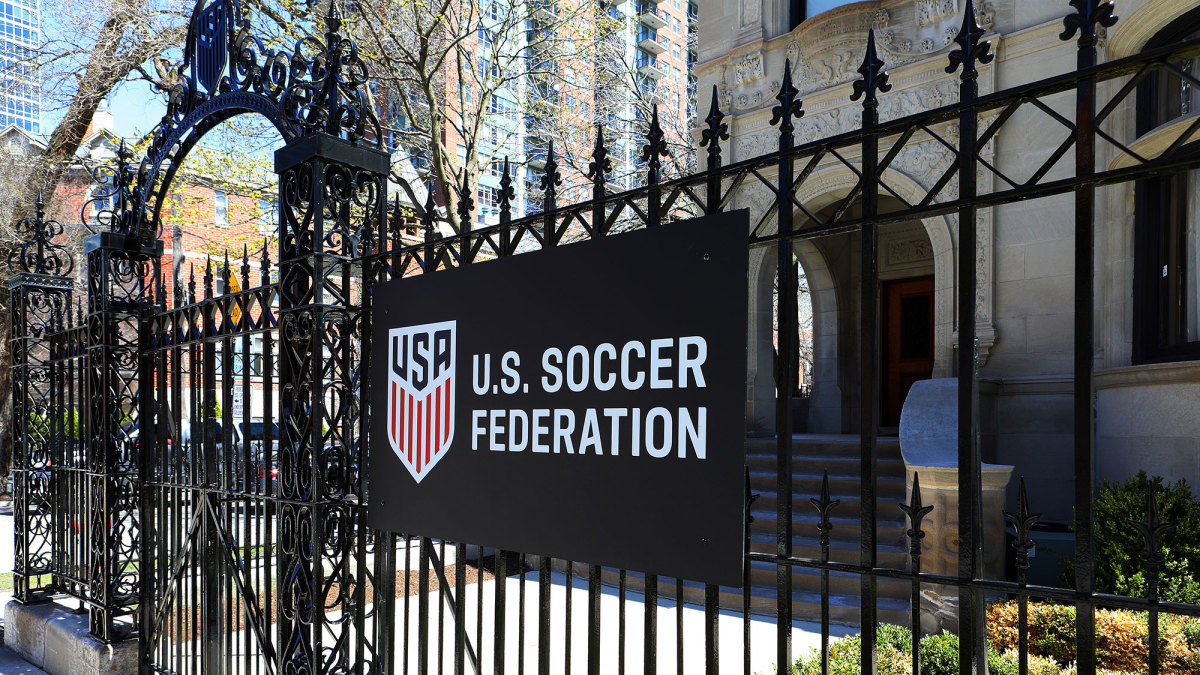The USWNT's Lengthy Appeal Process and What Comes Next After Legal Setback
U.S. Soccer winning summary judgment on pay-related claims brought by members of the U.S. women’s national soccer team has sparked questions about whether the players’ case is effectively over. Judge Gary Klausner’s ruling rejects the players’ claims that call for more than $66 million in damages. It leaves in place secondary concerns, including alleged discrimination by U.S. Soccer with respect to how players travel and their hotel accommodations. The surviving claims are set for review in a jury trial scheduled to begin on June 16.
To be clear, the players’ case for greater financial compensation is hardly “over.” Alex Morgan and Megan Rapinoe, who along with Carli Lloyd and Becky Sauerbrunn are the class representatives for WNT players, appeared on Good Morning America on Monday. They made clear that they will appeal.
“We are fighters,” Morgan expressed. “We’ll continue to fight together for this.”
This “fight” has plenty of supporters, including influential politicians. Former United States vice president Joe Biden, the presumptive Democratic nominee for president, threatens to, if elected in November, strip U.S. Soccer of funding for the 2026 World Cup it will co-host with Canada and Mexico unless it provides the players “equal pay.”
The players can eventually appeal Judge Klausner’s ruling to the U.S. Court of Appeals for the Ninth Circuit. The Ninth Circuit has jurisdiction over federal district courts in California and other West Coast states. The players and their attorneys might believe they would enjoy favorable odds with judges on the Ninth Circuit, which is traditionally regarded as one of the country’s most progressive courts. Judge Klausner, who earned a Bronze Star for his service as a United States Army captain in the Vietnam War and whom President George W. Bush nominated to the bench in 2002, is generally regarded as conservative-leaning.
It’s possible that the players would prevail on appeal, but it’s worth exploring the mechanics and challenges of that path. It is a journey that could take several years to complete.
The long road of a federal appeal
As a starting point, the timing for an appeal is not quite “ripe.” Under Rule 56 of the Federal Rules of Civil Procedure, a final judgment by a district court is almost always required before an appeal is permitted. A partial summary judgment, which captures Judge Klausner’s ruling in dismissing some but not all the players’ claims, does not count as a final judgment. As of now, the players will need to wait until after next month’s trial before they can file an appeal.
The first step in an appeal would be for the players to file a notice with the Ninth Circuit. This would begin a process that, according to data provided by the Ninth Circuit, normally takes in the ballpark of 16 months to 25 months before a decision is rendered. A 2018 study by appellate attorney Paul Killion of the law firm Duane Morris confirms that timeline. He found that, during 2016 and 2017, the median time from a notice of appeal to a decision in the Ninth Circuit was about 23 months.
Keep in mind, those data points reflect normal times, not the pandemic era in which we live. The COVID-19 pandemic has triggered health-related delays and postponements in civil litigation. This all boils down to a key point: If the players file a notice of appeal this summer, they might need to wait until 2022 before they learn if they prevail. Meanwhile, the players’ collective bargaining agreement with U.S. Soccer is set to expire on Dec. 31, 2021. This suggests the litigation is poised to cast a shadow over negotiations between the USWNT Players’ Association and U.S. Soccer.

A scouting report on each side’s likely arguments in an appeal
An appeal would involve dueling sets of written briefs filed by attorneys for the players and for U.S. Soccer. At some point in 2021, the attorneys would likely deliver oral arguments before a three-judge panel on the Ninth Circuit. In advancing the appeal, the players would maintain that Judge Klausner improperly applied the relevant legal standard. He should have only granted summary judgment if there were no genuine issue concerning crucial facts and if U.S. Soccer were entitled to judgment as a matter of law. When a judge grants summary judgment, the expectation is that no reasonable jury would have decided differently.
The players would contend that Judge Klausner had no right to take away the heart of their case from a jury of their peers. They’d emphasize that there are conflicting data points presented by both sides. Indeed, expert witnesses for the players and for U.S. Soccer have supplied very different calculations and shared disparate estimations about pay, wages, revenue and scales. These conflicts center on issues essential to the litigation. Remember, this is a case that is fundamentally about data. Both sides have retained well-credentialed experts who have offered competing narratives about the data. The players would also point out that in deciding to grant summary judgment for U.S. Soccer, Judge Klausner was obligated to view all evidence and all factual inferences in the light most favorable to the nonmoving party (that is, the players).
In response, U.S. Soccer would stress that Judge Klausner was clearly aware of these conflicts and the appropriate standards to evaluate them. His written order, which cites the applicable standards, seemingly reflects that awareness. As viewed by U.S. Soccer, Judge Klausner logically determined the players had failed to show that pay discrimination occurred and that no reasonable jury could have decided otherwise. To that point, Judge Klausner used empirical evidence to calculate that the players earned about $7,000 more per game than MNT players during the class period (2015 to 2019). U.S. Soccer would also argue that regardless of calculations, the union for the players negotiated a pay system that, in general, provides for higher guarantees but lower bonuses (in contrast, the union for the men's players negotiated a pay system that, in general, provides for lower guarantees but higher bonuses). To the extent the women's players believe their pay system is unfair or unjust, U.S. Soccer would maintain the players should rework their union and its bargaining strategies.
The analytics of appealing Judge Klausner
Judge Klausner’s rulings are usually sustained, rather than reversed, on appeal. Through appeals analytics provided by Westlaw, there have been 500 appeals of Judge Klausner’s rulings since 2002. The Ninth Circuit affirmed 57% of those rulings and, overall, positively reviewed 66% of them. The Ninth Circuit reversed or vacated only 17% of the rulings, with remaining outcomes consisting of mixed results.
In terms of cases classified as “labor/employment”—a moniker that applies to the the USWNT's case—there have been 26 appeals of Judge Klausner’s rulings. The Ninth Circuit affirmed Judge Klausner in 17 of those cases; in only three was there a “negative” outcome. Although every case is different, this data highlights a statistical challenge for the players: far more often than not, Judge Klausner’s rulings are upheld on appeal.
On the other hand, the standard of review that would be used by the Ninth Circuit could help the players. Decisions to grant or deny summary judgment are reviewed “de novo.” This means the Ninth Circuit would review an appeal by the players from a fresh perspective—de novo is Latin for “for the new”—rather than with deference to Judge Klausner. In other types of appeals, the applicable standard of review would be more deferential.

The Ninth Circuit is not so liberal anymore and other keys to an appeal
One important but unknown—and, for now, unknowable—factor is which three judges would be assigned to the Ninth Circuit panel. Assignments are determined on account of scheduling and availability of judges, among other logistical factors; assignments are not based on ideological viewpoints or on whether a judge was nominated by a Republican president or a Democratic president. The “luck of the draw” in which three judges are assigned to an appeal would have a significant bearing on the players' chances.
While the Ninth Circuit is generally regarded as progressive, that reputation has shifted somewhat in recent years. Of the Ninth Circuit’s 49 judges and senior judges, 25 were nominated by Democratic presidents and 24 were nominated by Republican presidents. Ten were nominated by President Donald Trump. The court is now almost evenly split as to judges nominated by presidents from each party. Depending on the outcome of the 2020 presidential election, the Ninth Circuit could continue to migrate in a conservative direction.
That said, federal judges often don’t fit into neat “liberal/conservative” boxes. They are not politicians or political commentators, and because they hold lifetime tenure, they need not worry about popularity contests. Sometimes they hold values that disappoint the party of the president who nominated him or her. For example, when U.S. Supreme Court Chief Justice John Roberts joined four “liberal” justices in upholding the legality of Obamacare in National Federation of Independent Business v. Sebelius, some were surprised that a judge nominated by a Republican president, George W. Bush, would reach such a determination. Attorneys, particularly those who practice in the area of federal appeals, were far less surprised. The party affiliation of the president who nominated a judge is not a reliable indicator of a judge’s view on every topic.
Another “wildcard” factor is that the issues in a USWNT appeal don’t fully align with a liberal/conservative divide. At first glance, the players would seem likely to draw the support of progressive judges. They insist that they have been paid less than their male counterparts due to gender discrimination; however, a progressive-leaning judge might find labor relations more animating. Through their union, the women's players agreed to a set of workplace terms, including pay mechanisms. If courts effectively altered terms and assumptions captured in a CBA signed by a union and management, there might be less certainty in CBAs—an outcome that could undermine the power of unions.
Then again, as argued by attorneys for the players, a provision within the Equal Pay Act expresses that “collective bargaining agreements are not a defense” and that “any and all provisions in a collective bargaining agreement which provide unequal rates of pay in conflict with the requirements of the EPA are null and void and of no effect.”
These are not easy issues.

The litigation could last for years—and both sides could emerge as “winners” or “losers”
The players winning an appeal likely wouldn’t end the litigation. The Ninth Circuit could determine that Judge Klausner incorrectly granted summary judgment on pay issues and that the case needs to be rewound to before that determination. In that scenario, the players would still need to win a trial—a win that, in turn, would be subject to an appeal by U.S. Soccer to the Ninth Circuit.
There’s also a small possibility of a “rehearing en banc.” It would occur after the three-judge panel rules and would entail review by 11 Ninth Circuit judges (en banc rehearings are rarely granted; one study finds that less than 1/7 of one percent of the Ninth Circuit’s docket consists of en banc appeals). Likewise, it’s possible that the losing side petitions the U.S. Supreme Court to grant a review of the case. The Supreme Court denies a writ of certiorari, as that motion is called, in about 98% of cases, though the odds are slightly higher for cases from the Ninth Circuit.
Long story short: the litigation could last into the mid-2020s.
But it doesn’t have to. Reasonable minds on the part of U.S. Soccer and the USWNT could reach a settlement that gets their dispute out of the courts. While U.S. Soccer is currently winning, it could be headed for a pyrrhic victory. U.S. Soccer’s brand and its relationship with sponsors have been pummeled in the course of offering legal defenses that have at times seemed insensitive, if not outright offensive. Even if U.S. Soccer avoids paying the players the $66 million in damages they were seeking, how much economic value will it have lost by going to war with the World Cup champs? And how much more would it lose if the case lasts for several more years?
U.S. Soccer might win, but not in the game that counts.
Michael McCann is SI’s Legal Analyst. He is also an attorney and the Director of the Sports and Entertainment Law Institute at the University of New Hampshire Franklin Pierce School of Law.
